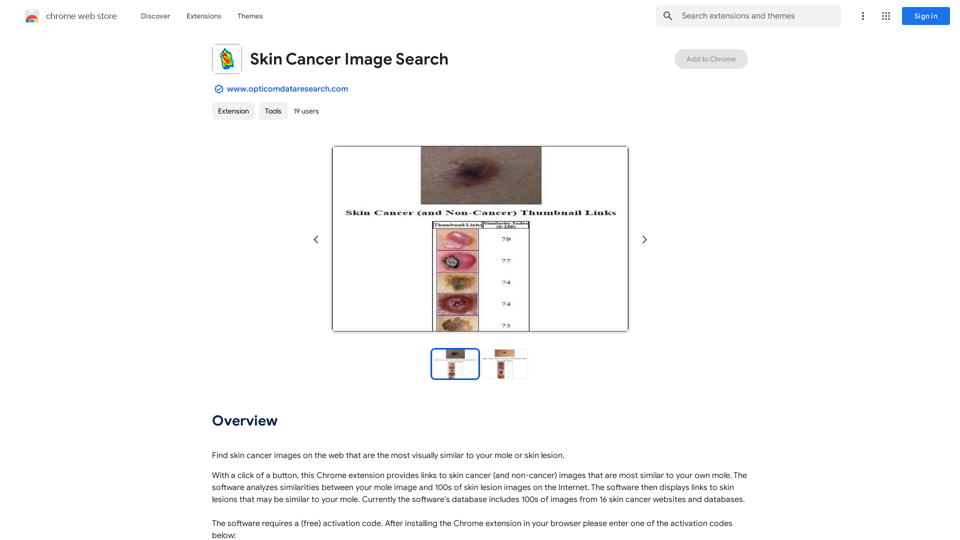Picture To Summary AI is an advanced tool that utilizes cutting-edge AI technology to generate summaries from images and pictures. This innovative platform analyzes visual content to provide comprehensive summaries using sophisticated image and picture summarization techniques. It offers users the ability to quickly understand and interpret image content through AI-driven image understanding.
Picture To Summary AI - Get summary from image or picture by AI
Picture To Summary AI is a tool for generating summaries from images or pictures.

Introduction
Feature
Upload and Analyze Images
Users can easily upload images to the platform for analysis. The system supports jpg/png files with a size limit of 2Mb, making it accessible for various image types.
Customizable Summarization Intentions
The platform offers multiple summarization templates, including:
- AI Summarize Image Briefly (Default)
- AI Describe Image In Detail
- Extract Text From Image
- AI Describe Image For Caption Or Title
- Image To Prompt
- Generate Marketing Copy
- Object Recognition
- Summarize Image
Three-Step Process
- Upload Picture Or Image
- Enter use of Summarizing Image
- Do Image Summarize
AI-Driven Technology
- Utilizes multimodal LLM with deep tuning for image summarization
- Offers customizable prompts for tailored results
- Continuous optimization by the development team
Key Features
- Concise Summary: Quick and accurate summaries of image content
- Text Extraction: Ability to extract text from images
- Caption Generation: Creates captions for social media posts
- Custom Prompts: Allows users to guide AI understanding for specific needs
Multiple Applications
- Social media content creation
- Research and presentations
- Online marketplace descriptions
- Accessibility improvements (alt text generation)
- Marketing and advertising analysis
FAQ
What is Picture To Summary AI?
Picture To Summary AI is an online tool that uses AI technology to analyze images and generate insightful summaries or descriptions. Users can upload pictures, choose summary styles, or provide custom prompts for AI-generated summaries.
Is Picture To Summary AI free to use?
The service offers a limited free trial, but a paid subscription is required for full access to all features and unlimited usage due to the computational resources needed.
What are the limitations of Picture To Summary AI?
While powerful, the tool is still under development. Summary quality may vary based on image complexity, clarity, and the specific prompt used. The team continuously works on improvements.
How can I get started with Picture To Summary AI?
Visit the website at https://picturetosummaryai.online/, upload an image, choose a summary style or provide a custom prompt, and click "Summarize Image" to receive your generated summary in seconds.
Is Picture To Summary AI open-source?
Currently, Picture To Summary AI is not open-source software. However, the team welcomes feedback and suggestions from users.
Can Picture To Summary AI be integrated into other software or workflows?
At present, the service does not offer direct API integration, but future plans may include making AI capabilities accessible through APIs.
Latest Traffic Insights
Monthly Visits
5.16 K
Bounce Rate
47.79%
Pages Per Visit
1.53
Time on Site(s)
27.57
Global Rank
3700345
Country Rank
United States 1951960
Recent Visits
Traffic Sources
- Social Media:6.29%
- Paid Referrals:1.13%
- Email:0.20%
- Referrals:8.57%
- Search Engines:24.65%
- Direct:58.82%
Related Websites

UniOne AI is an AI assistant that integrates several AI services such as GPT3.5, GPT4, Claude 3, Gemini Pro and more!
193.90 M
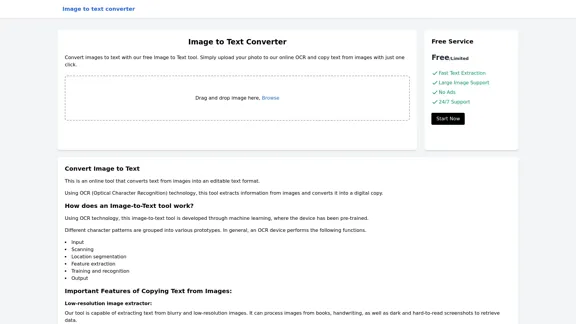
Image to text converter, converting image text to text, how to extract text from an image.
Image to text converter, converting image text to text, how to extract text from an image.Transform images with text into editable, searchable content instantly. Our advanced AI technology extracts text from any image with remarkable accuracy, supporting multiple languages and document types. Simply upload your picture, and watch as handwritten notes, printed documents, screenshots, and signs are converted to crisp, copyable text in seconds.
0
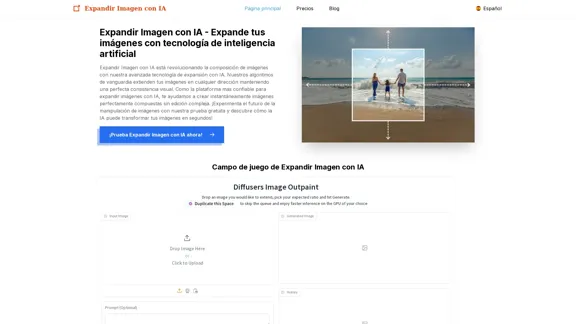
Expand Image with AI - Expand images for free with AI, free trial to extend images.
Expand Image with AI - Expand images for free with AI, free trial to extend images.Expand Image with AI is the leading platform that allows you to expand and extend images using artificial intelligence technology. Simply upload your image to our AI system to expand images and get impressive results in seconds. Experience the future of image composition with our advanced Expand Image with AI technology.
0
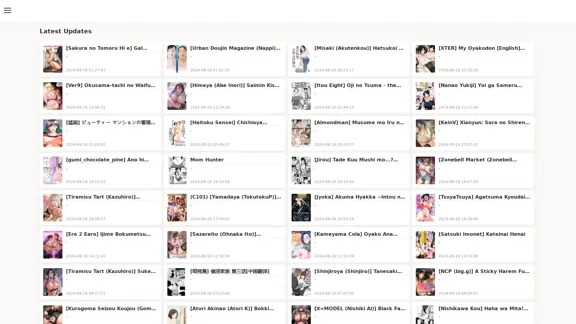
FreeAI Manga is a website that provides free access to a wide variety of manga content, including doujinshi and adult-oriented manga. The site features a regularly updated collection of manga titles across different genres and languages, with a focus on fan-translated works.
0
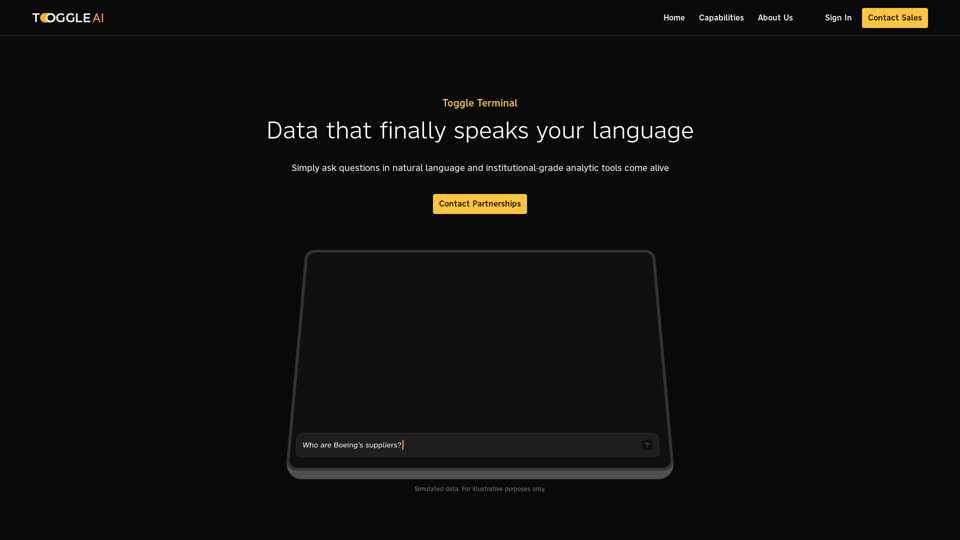
Toggle Terminal – Bring data to life with natural language
Toggle Terminal – Bring data to life with natural languageBid farewell to outdated terminals and cumbersome, antiquated interfaces. Our institutional-grade analytical tools spring into action, ready to serve you, simply by asking questions in everyday language.
0

AI Product Shot - Create Beautiful Product Images with AI
AI Product Shot - Create Beautiful Product Images with AIAI Product Shot - Create stunning and professional AI-generated product images that boost your sales. Achieve expert-level product photos using AI technology. Begin your journey for free.
1.69 K

FLUX Fill: Advanced AI Solution for Image Inpainting and Outpainting
FLUX Fill: Advanced AI Solution for Image Inpainting and OutpaintingFLUX Fill provides professional-quality AI image inpainting and outpainting. Change your images with smooth edits and natural extensions.
664
